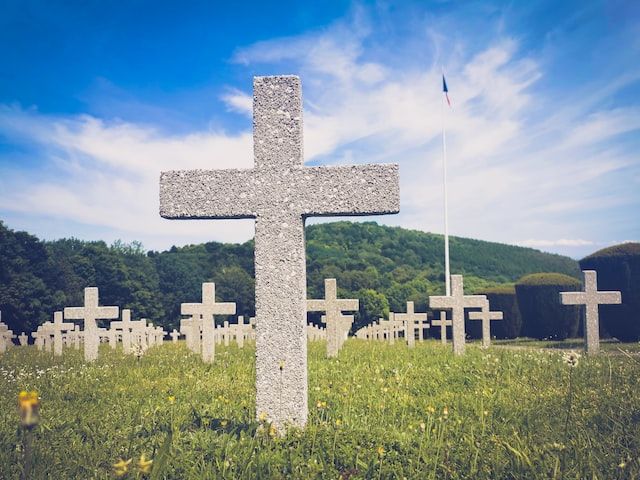
Why Visiting Graves Still Matters in a Digital-First World
1. Emotional Grounding in a Digitally Disconnected Society
As technology advances, we communicate more through text messages, emails, and social media than face-to-face interaction. Yet when it comes to processing grief, loss, or remembrance, digital platforms often fall short. Visiting cemeteries San Bruno, CA provides a space where emotions can be expressed naturally, away from the noise of digital life. Being physically present near a loved one’s final resting place allows for a deep emotional connection and grounding. The stillness, combined with the physical act of being there, helps people access emotions that are often suppressed in our fast-moving digital routines. It fosters a rare and powerful experience of presence.
2. Honoring Cultural Traditions and Family Rituals
Across cultures and generations, visiting graves has long played a central role in family life and collective memory. Rituals such as bringing personal mementos, lighting candles, or spending time in quiet remembrance help preserve these time-honored practices. In many families, regular visits serve as moments of reconnection, not just with the departed, but with one another. These gatherings can foster storytelling, shared values, and continuity between generations. In a digital age where family interactions are often fragmented and fleeting, continuing such rituals strengthens identity and community.
3. A Personal Space for Reflection and Mental Well-being
Modern life encourages multitasking, and even our most private moments are often disrupted by digital distractions. Visiting a gravesite offers something rare: uninterrupted time for reflection. It becomes a personal retreat, encouraging mindfulness and calm. Many visitors report feeling more grounded, emotionally restored, or mentally clear after these visits. Being surrounded by nature, quiet paths, and the symbolism of life’s fragility encourages introspection in a way that few digital experiences can replicate. These moments often lead to a greater sense of acceptance, perspective, and gratitude, the foundations of strong mental wellness.
4. Creating Purposeful, Screen-Free Rituals
In our tech-driven world, purpose-driven routines are often sacrificed for convenience. However, carving out time for intentional acts, like visiting a grave, reintroduces meaning into daily life. These rituals might include laying a token, speaking quietly, or simply sitting in silence. Unlike the fleeting digital memorials online, these physical actions invite presence and purpose. They offer the mind a chance to step away from algorithm-driven content and re-engage with human experiences rooted in compassion and memory. This act of ritualistic remembrance encourages deeper emotional healing and provides a natural structure for honoring those who have passed.
5. Reconnecting with Legacy and Shared Humanity
In a digital world, history can sometimes feel like data, stored in cloud drives or timelines. But walking through burial grounds brings legacy into tangible focus. Reading names, observing dates, and reflecting on the lives that came before gives visitors a profound sense of continuity. It’s not just about remembering one individual; it’s about understanding how life and death weave together through generations. These visits remind us that we are part of a shared human journey, grounded in real stories and real people. Especially in communities with rich local history, like San Bruno, visiting these spaces offers a moment to honor both personal and collective legacies.
 6. A Quiet Connection in a Noisy World
6. A Quiet Connection in a Noisy World
Every day, people are bombarded with alerts, updates, and notifications. Noise is constant, digital, and otherwise. Graveside visits provide a peaceful counterbalance. They offer a break from information overload and an invitation to slow down. Surrounded by nature and reflection, visitors often find an unexpected sense of clarity. There’s no algorithm here, only space for memory, emotion, and quiet. In this way, such visits become acts of resistance against digital fatigue, helping people reconnect with themselves and the essence of human life.
7. Teaching Future Generations the Value of Remembrance
As children grow up in a world of instant messages and short attention spans, visiting graves teaches something essential: the importance of remembrance. When younger generations join family visits, they begin to understand the value of honoring those who came before them. It’s not just a history lesson, it’s a moral and emotional education. These shared experiences shape empathy, patience, and gratitude, qualities not easily taught through screens. Over time, these lessons become internalized, ensuring that remembrance remains a living tradition rather than a forgotten practice.
Even in a world shaped by technology and rapid innovation, the act of visiting graves remains deeply relevant. It connects us emotionally, strengthens traditions, promotes reflection, and keeps the legacy alive in a way no screen can duplicate. These visits are not just acts of memory, they’re affirmations of our humanity. If you’re exploring meaningful ways to maintain this important tradition, we invite you to learn more about our service at The Italian Cemetery. There, remembrance finds a peaceful and lasting home among cemeteries San Bruno, CA.
